125 years of property sold through Country Life, from Chartwell to Stonehenge (yes, really)
Country Life has been at the heart of the finest property for sale in Britain ever since the first issue, some 125 years ago today. Our property editor Annunciata Elwes took a look through the archives to see some of the most extraordinary and noteworthy places for sale.

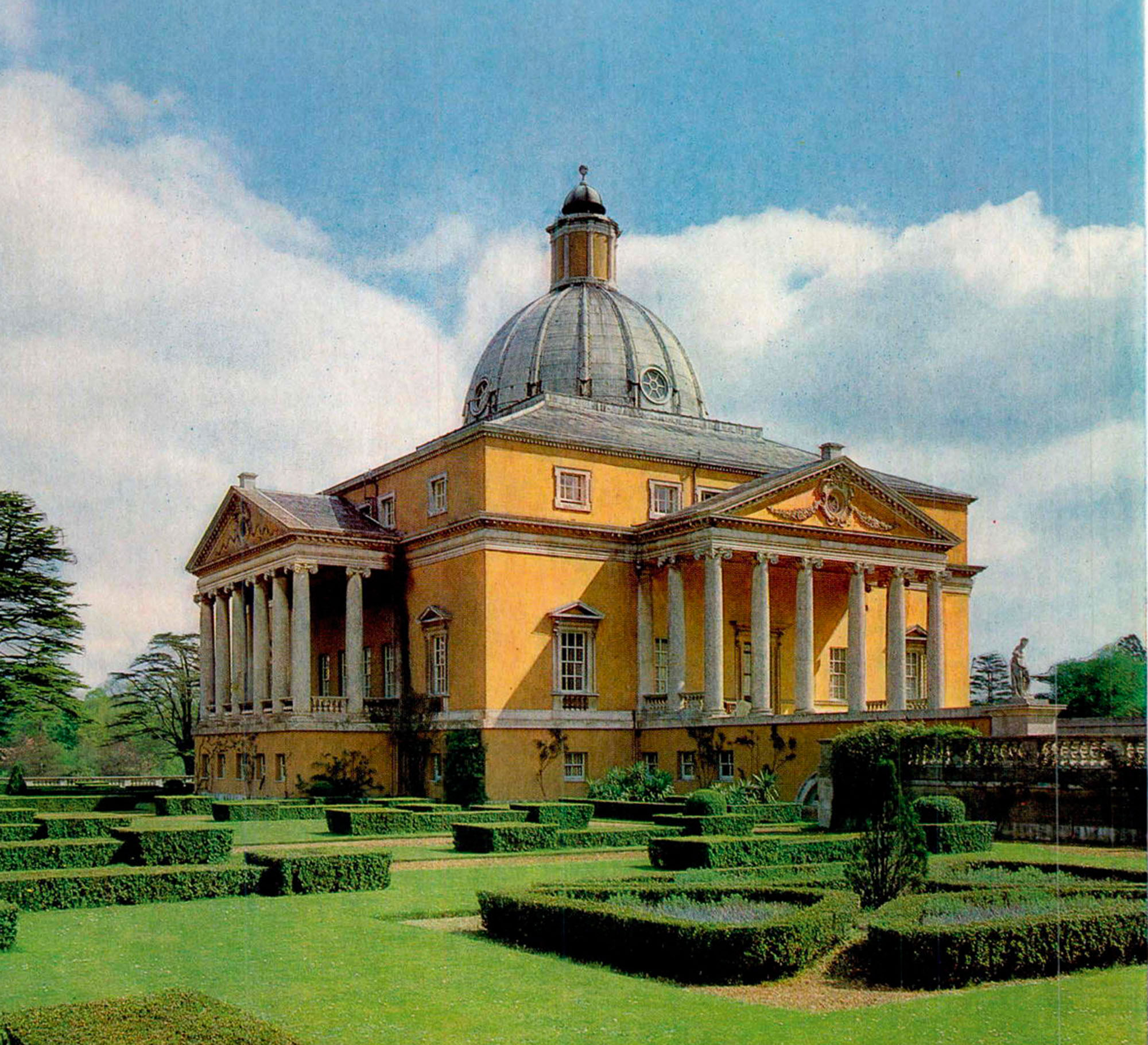
Browsing the Country Life archive is a heady trip down the rabbit hole. Eventually, one gives up specific searches, the results are too numerous and the amusingly dated advertisements for nylon tights and lawnmowers too distracting. In fact, it’s harder to find country houses that haven’t been featured one, two or many more times.
Over the past 125 years, our property pages have revealed a strange timeline of the ebbs and flows of Britain’s fortunes, not to mention journalistic style. We’ve leapt from ‘Within easy reach of the Belvoir... eighteen best bed and dressing rooms… twenty-six loose boxes’ (Gaddesby Hall, Leicestershire, 1897) to helipads, saunas, electric gates and ‘7 bedrooms (6 en suite)’.
Within that time, we’ve seen a flurry of family estates come to the market after the First World War, hunting boxes and castles to let for £100 a year and cottages for £5 after the Second World War; we can trace everything from financial crashes to the rise of neo-Georgian architecture and the Church selling off old vicarages (ramped up in the 1960s), followed in later decades by luxurious new-builds, controversial conversions and the odd Paragraph 55-approved plot.
In 1912, Knight, Frank & Rutley famously purchased estate agents Walton & Lee (for £4,000) solely to secure the prime front-page advertisement in Country Life. That same year, the magazine carried an advertisement for the roofing balustrade, columns and urns of demolished Trentham Hall, Staffordshire, priced at £200, which is said to have marked the start of the era of country-house destruction; by 1955, one was being demolished every five days. Most will also have heard how Stonehenge, advertised in 1915, was bought for £6,600 by a man called Cecil Chubb who, mistakenly thinking his wife might like it as a gift, ended up giving it to the nation.
As the pages of property that have fattened Country Life for the past 125 years encapsulate British culture from such a unique perspective, we assure you, the selection of advertisements presented here was hard to slim down. Goodness knows what the next 125 years will hold; if they’re anywhere near as eventful as life has been since 1897, we’ll stay tuned.
1897
Country Life’s first issue (January 8, 1897) featured Stowe House, Buckinghamshire, ‘ancestral home of the Dukes of Buckingham and Chandos, and now become vacant in consequence of the late tenant, H. R. H. Comte de Paris’, to be let or sold through Messrs Walton & Lee. The impossibly grand house with its temple-dotted landscape had been in decline for decades and was eventually sold for £50,000 through Jackson-Stops in 1921; Stowe School opened two years later and still flourishes.
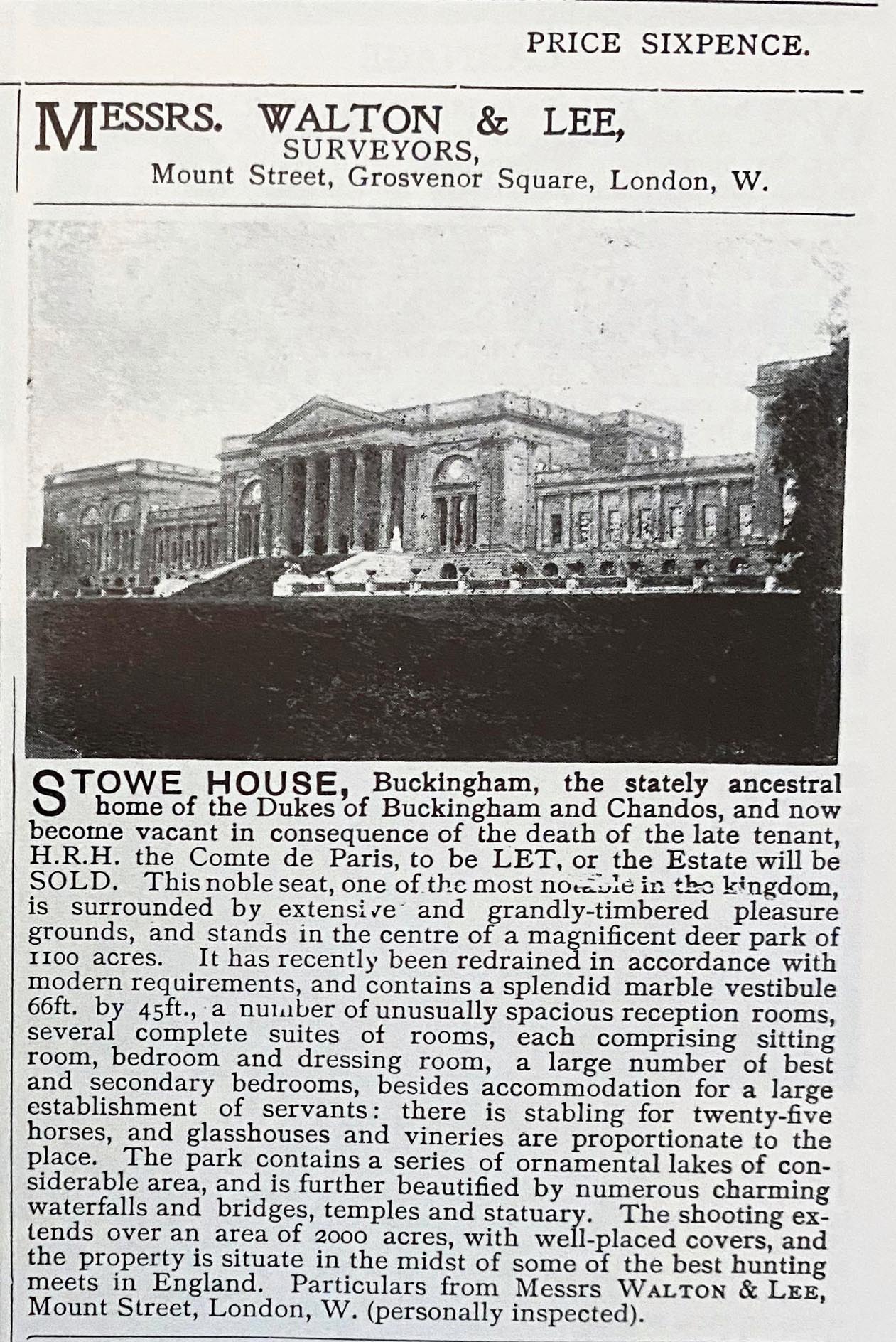
1904
Pitt the Elder lived at Hayes Place, Kent, Pitt the Younger was born there and the sprawling pile was later home to the Hambro banking family. Demolished in 1933, it is illustrated here for sale through Messrs Druces and Attlee.
Exquisite houses, the beauty of Nature, and how to get the most from your life, straight to your inbox.
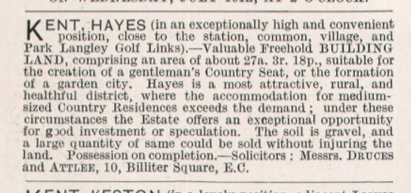
Sadly, the advert had no photograph; however, around the same time there was an advertisement for the house below, claiming to be ‘once the home of Pitt’.
Our extraordinary architecture editor John Goodall, who has an encyclopaedic brain when it comes to architecture (and most other subjects) believes it may be Nonsuch, Surrey, built by Wyatville, but we are unable to find a connection between it and any of the many famous members of the Pitt family. So the mystery deepens; please get in touch if you recognise the house, or have any ideas.
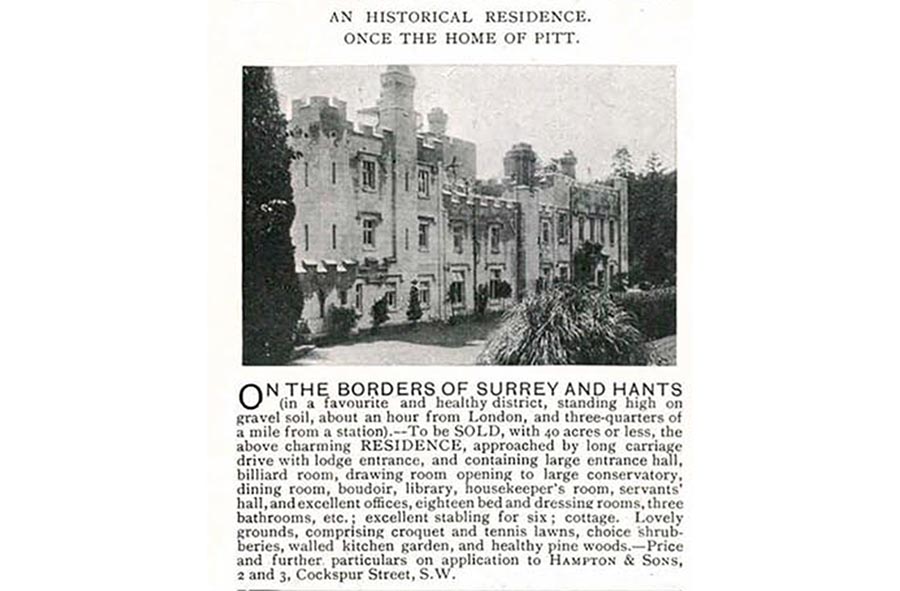
1906
Norris Castle on the Isle of Wight, with its Humphry Repton grounds, was a favourite with Queen Victoria. Currently being reimagined as a luxury hotel, it seems that the suggestion of Hampton & Sons that it become a ‘high-class watering place… at which all passenger steamers could call’ never came to fruition.

1912
The ad that ‘launched’ 1,000 (and then some) country-house demolitions, the once magnificent Trentham Hall in Staffordshire was also designed by Barry. Sewage from the Stoke potteries flowing into the lake via the River Trent somewhat soured the Capability Brown parkland and, from 1905, the 4th Duke of Sutherland chose not to live there. Sadly unwanted — both local council and Potteries rejected it — it was demolished in 1912. Various remains, including the now Grade II*-listed Grand Entrance and Orangery, are on the Historic England Heritage at Risk Register.

1915
‘I thought a Salisbury man ought to buy it, and that is how it was done.’ It’s said that Mrs Chubb was unimpressed when her husband, Cecil, presented her with the gift of Stonehenge, purchased on a whim for £6,600, having gone to an auction in Salisbury intending to buy some chairs. He gifted it to the nation in 1918 — an act of generosity that earned him a baronetcy — with the condition that locals visit for free and that the public shouldn’t pay ‘a sum exceeding one shilling’. Stonehenge was advertised in Country Life as part of the sale of the Amesbury Abbey estate.
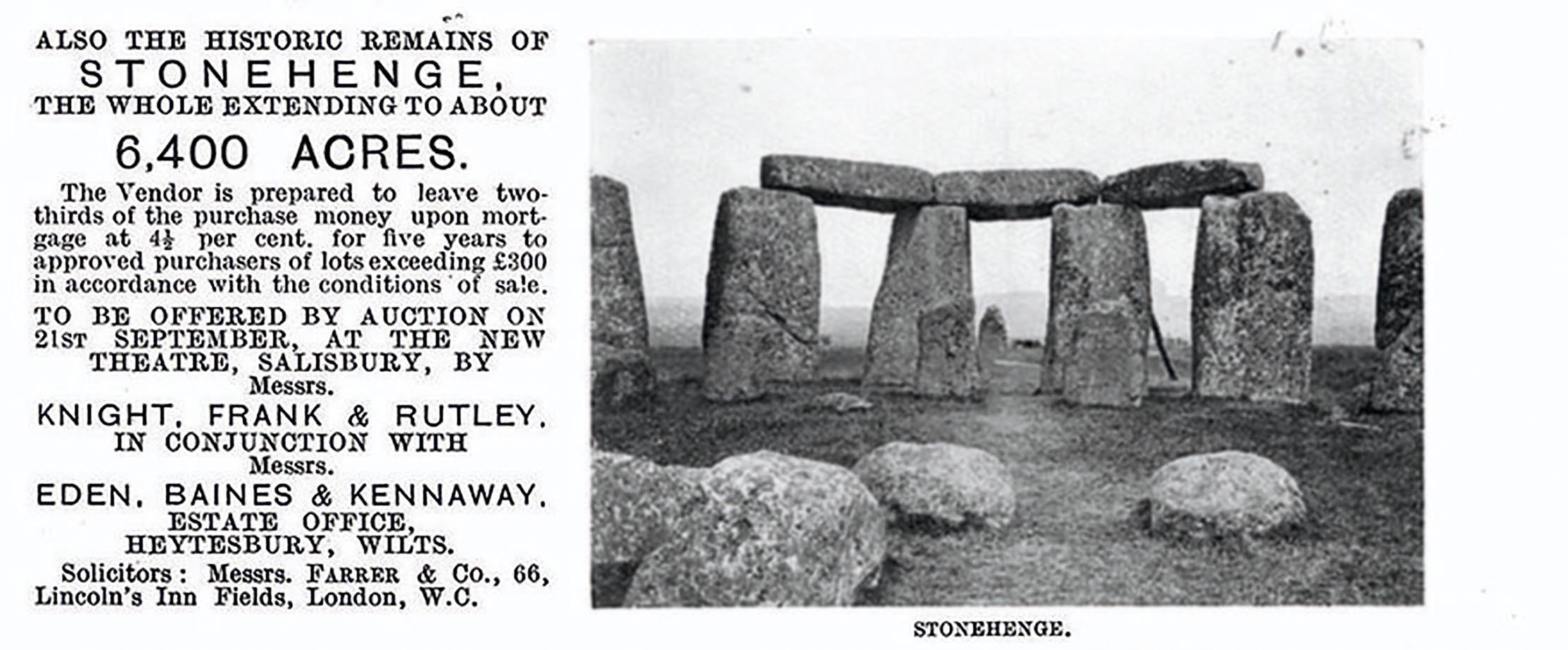
1921
Sir Winston Churchill purchased Chartwell in Kent through Knight Frank in 1922 for £5,000, apparently without consulting Clementine. It was home to his family for the next 40 years, not to mention goldfish, miniature poodles Rufuses I and II and Jock the marmalade cat. ‘A day away from Chartwell is a day wasted,’ he was known to say.

1925
What exactly is Fonthill Abbey? One might well be confused. The Wiltshire estate has enjoyed a number of architectural guises — a 16th-century house replaced by an 18th-century one that burnt down and was followed by a Palladian incarnation, which was mostly demolished. Next came Wyatt’s Gothic Revival Abbey in 1796, which fell down in 1825.
A Scots Baronial Abbey was built some 500 yards away in the 1850s — the house seen here, on the market with Messrs Rawlence & Squarey in 1925 — demolished in 1955. A pavilion surviving from the Palladian version was expanded until its demolition and a new Fonthill House was built at the beginning of the 20th century, demolished and replaced in the 1970s with the Classical-style version that stands today.

1935
The current owner of Gothic-style Toddington Manor — which Sir Charles Barry cannily used as inspiration for his Houses of Parliament design, its then owner being head of the competition judges — is Damien Hirst. The Gloucestershire pile has been encased in scaffolding for more than a decade, to the annoyance of locals, and it is said the artist hopes to turn it into a gallery and his family home. As to its being on the market in 1935, the National Union of Teachers bought it in 1939 as an air-raid free base, the grounds of which they shared with Dunkirk evacuees and the US Army, which later took over the house.

1946
Park Place in Berkshire was sold in 2011 to a Russian billionaire for £140 million, setting a record as Britain’s most expensive home outside London. Before then, it had indeed been a school, as the 1946 advertisement advises, and was also the set for the 2007 film St Trinian’s.

1966
An extremely early example of colour photography in a Country Life property advertisement, which agents used only sporadically through the 1970s. Purchased in 1976 for £1.5 million, Mereworth Castle, Kent — one of five houses in Britain inspired by Palladio’s Villa Rotonda and a prisoner- of-war camp in the Second World War — is now the home of Mahdi Al Tajir, the Bahrain-born businessman who owns Highland Spring.

1972
Founded in 1855, Savills has been through numerous iterations. At one time, following two mergers, letters from the Chelmsford office had to be signed ‘Yours faithfully, Alfred Savill, Curtis & Henson and Balls & Balls’. Luckily for the country’s ink supplies, things were simplified in 1972.
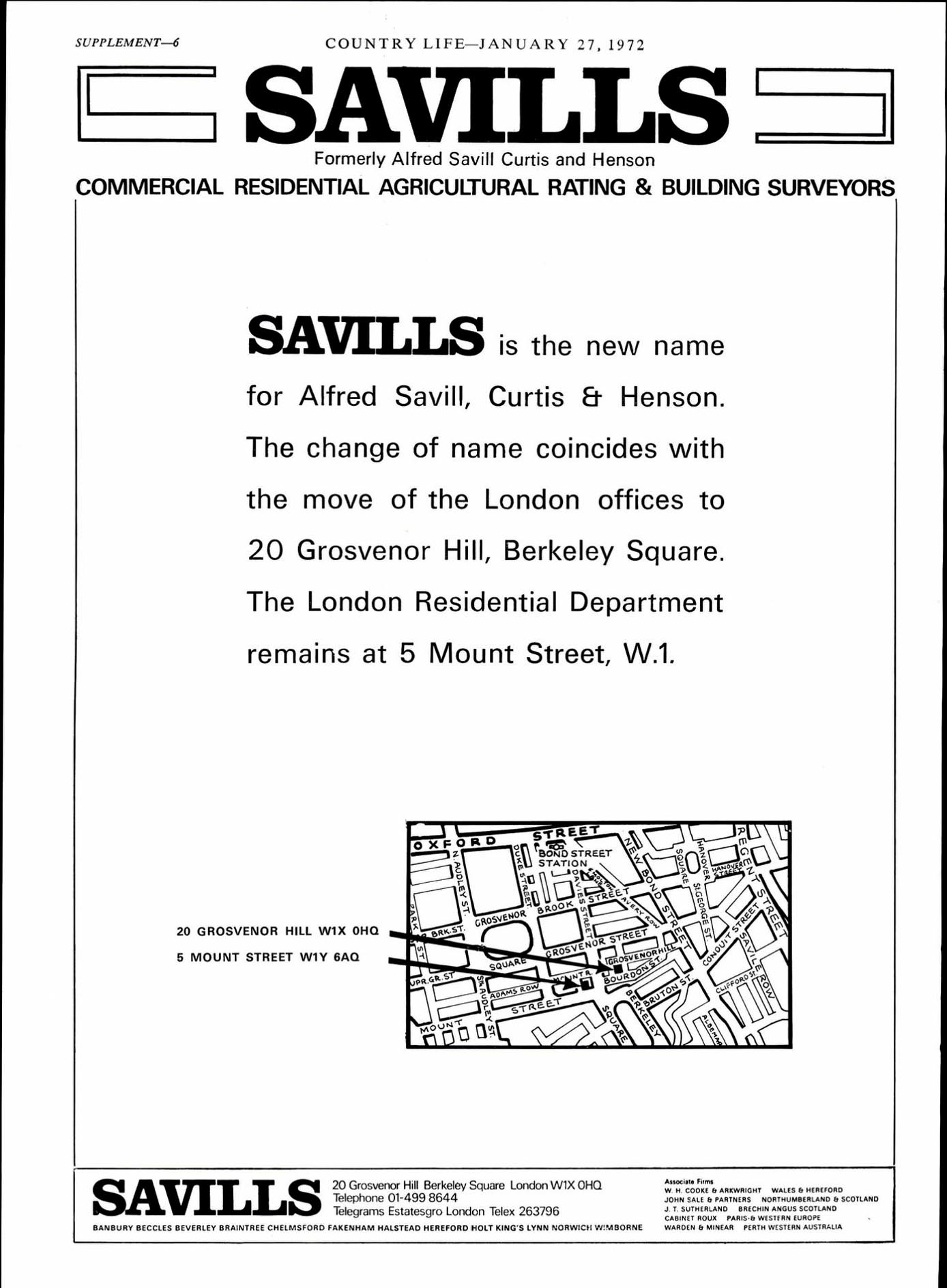
1980
Quite the prize, when it was marketed in 1980, the 763 acres of Middle Hill estate, Worcestershire, included Cotswolds landmark Broadway Tower.
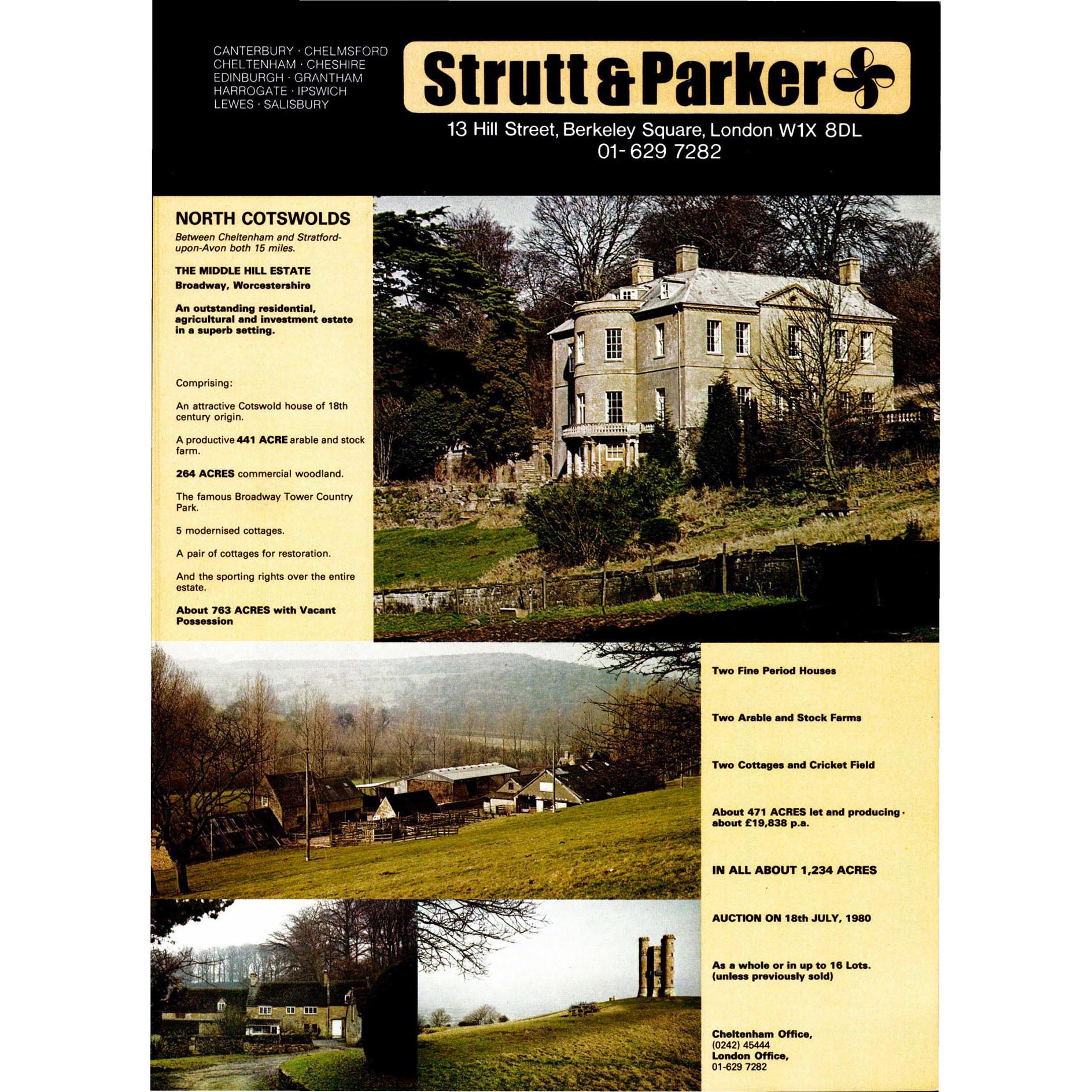
1991
The great architects who designed many of our country houses may have been horrified that, a couple of hundred years down the line, their creations would be divided up, too expensive to maintain as a whole. Life certainly has changed since James Paine built Georgian New Wardour Castle in Wiltshire (the ruins of the old one remain a charming landscape feature) for the Arundell family in 1776.
For about 30 years until 1990, it was the Cranborne Chase boarding school for girls and passed for the Royal Ballet School in the film Billy Elliot. After he spotted an advertisement in Country Life, it was sold in 1992 for less than £1 million to a developer who restored it, turned the wings into flats and eventually sold the huge, central part of the house to Jasper Conran for £2.75 million in 2010.

2018
Picture-perfect Georgian Bledisloe House, Gloucestershire, was sold through Savills in May 2020 (asking price £9.25 million).
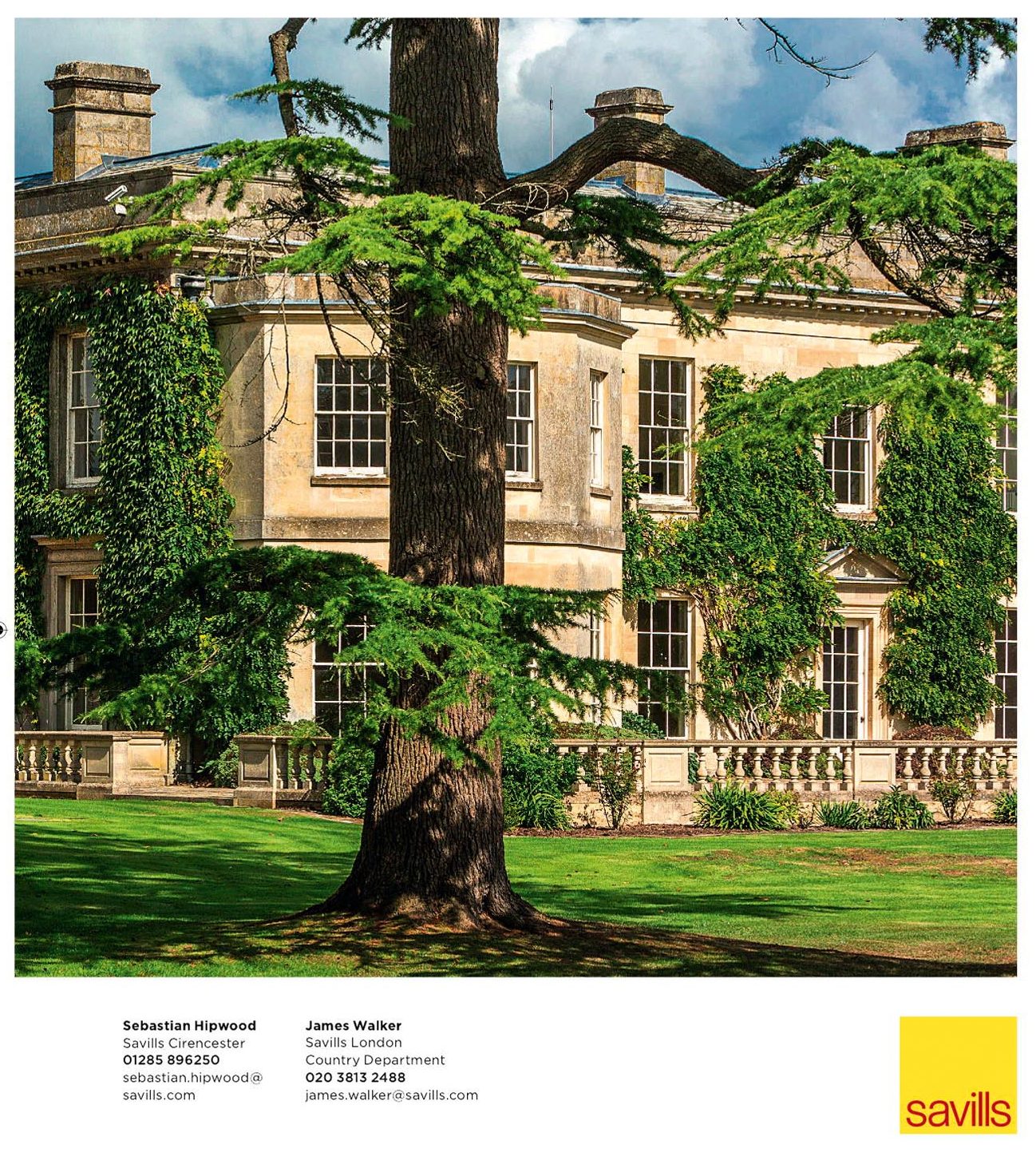

Credit: Country Life
How Country Life’s 125-year journey began, thanks to a visionary founder
As Country Life celebrates its 125th anniversary, Michael Hall tells the remarkable story of how the magazine came into being

Curious Questions: Did a double decker bus really jump over Tower Bridge?
London's most famous bridge is 125 years old in 2019, but for all the marvellous facts there's only really one
Annunciata is director of contemporary art gallery TIN MAN ART and an award-winning journalist specialising in art, culture and property. Previously, she was Country Life’s News & Property Editor. Before that, she worked at The Sunday Times Travel Magazine, researched for a historical biographer and co-founded a literary, art and music festival in Oxfordshire. Lancashire-born, she lives in Hampshire with a husband, two daughters and a mischievous pug.

